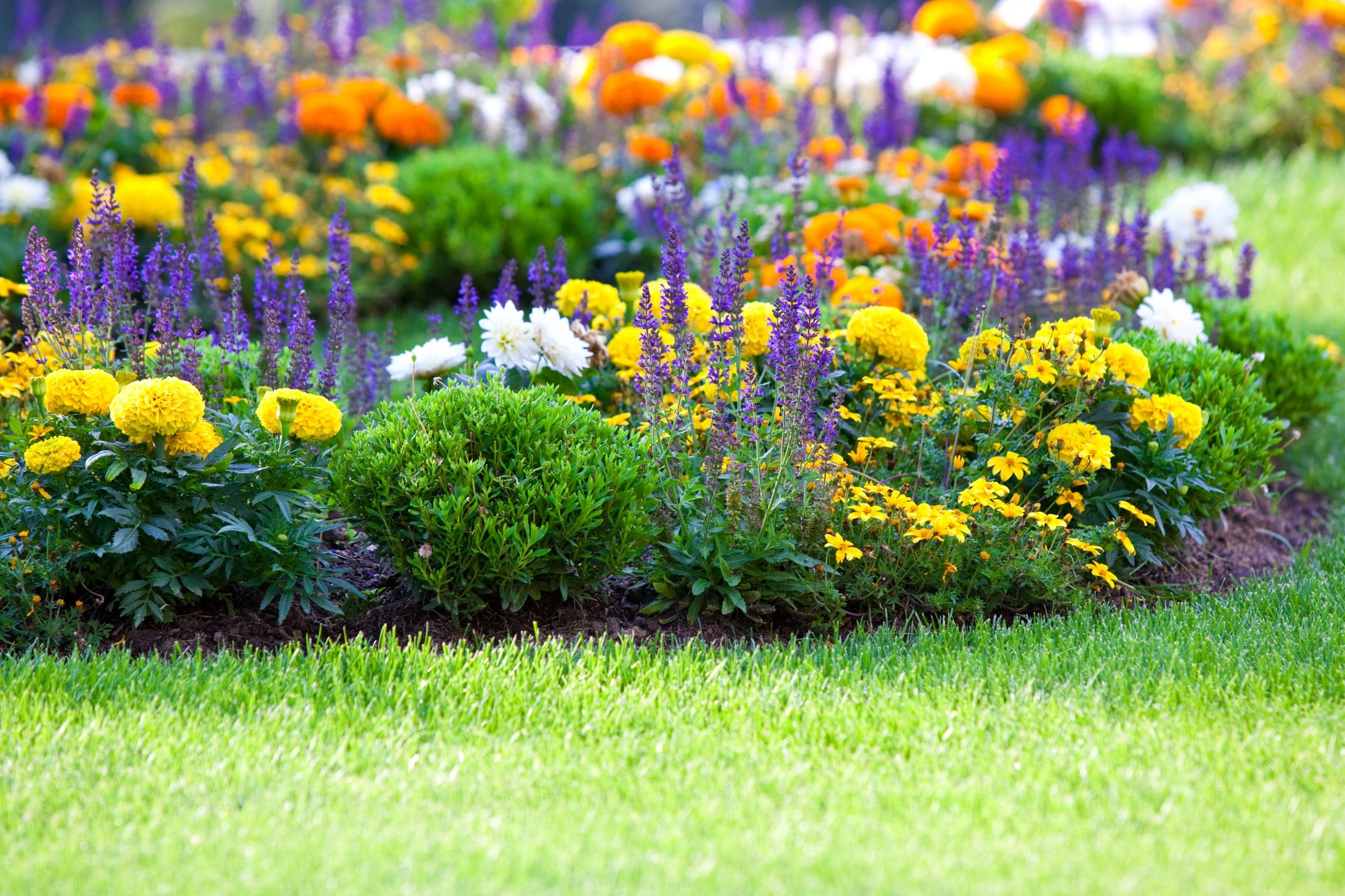
If you offer seasonal color services, the last thing you want is to deal with are complaints from clients about their annuals not looking the best during the summer months.
Since this is the prime time for the landscape to pop, check out some of the main maintenance methods to ensure the flower beds remain thriving.
Water Deeply
Deep, infrequent watering is better than light, frequent watering as this encourages root growth. The goal is to moisten the soils to a depth of 12 inches. Use a water meter to see how deep the water reached. Depending on the types of annuals you use, some may prefer more or less moisture than average.
Try to keep the foliage dry when watering, but if you do have to use overhead sprinklers, try to water disease-prone annuals like zinnias and petunias early in the day so they have a chance to dry off before nighttime. This will lessen the risk of disease.
If the plants are wilting, check the soil moisture first. If it’s moist, don’t water it. Avoid over-watering as saturated soils can lead to root disease.
Deadhead and Prune
Another way to keep seasonal color beds looking fresh is consistently deadheading. Removing spent flowers from plants like zinnias, marigolds, annual daisies, salvias, cosmos, dahlias, geraniums and petunias encourages them to put out more blooms.
While some newer varieties are “self-cleaning” and will drop the spent flowers without needing any maintenance, others still need to be manually removed. Other annuals produce flowers on the end of long stems. To keep a shapely appearance, prune these stems back every half week to stimulate growth further back on the stems.
Fertilize
Similarly, fertilizing annuals can encourage growth and produce vigorous growing plants with a bounty of flowers. However, don’t be tempted to overdo it with the fertilizer. Too much fertilizer can result in a buildup of soluble salts that damage the roots or mostly foliage growth and no blooms.
Don’t use fertilizers high in nitrogen as this stimulates too much foliage growth. Annual bedding plants respond well to more phosphorus. Make sure the plant is well watered before applying fertilizer. Root injury can occur when soil moisture is limited.
You can use slow-release, granular fertilizer that will last over the season. If your crews visit the site on a more regular basis, they can apply liquid fertilizer every week or two or as needed.
Know When to Replace
If you’ve done everything else in your power to keep the annuals healthy and they’re still not surviving, know when to replace them and try something else. Depending on your area, there may be certain varieties that fail no matter what you do once the late summer heat hits. Take this time to test out other plants that may have a stronger tolerance for brutal conditions.
If it’s just one annual that’s looking bad you can remove it and allow other flowers to fill the space. Opting for a good mixture of flower types will prevent you from having a whole bed fail at once.

